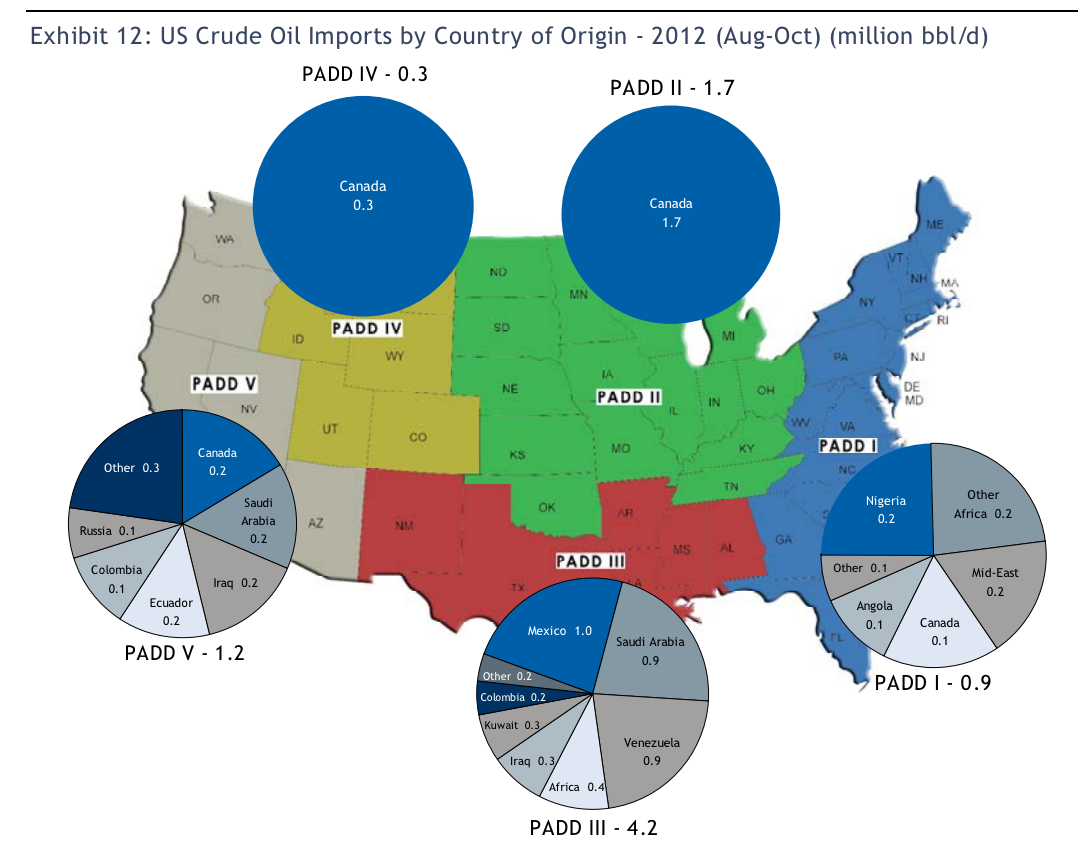Ever wondered exactly which countries the oil in your region comes from? Well here is the answer.
Last year, the U.S. imported 40 percent of its crude oil. But not as much as you might think comes from the Middle East. Most of it comes from Canada, and a good amount from Africa.
But where your fuel comes from has a lot to do with what part of the country you’re in. To the person standing at the pump, gassing up the ol’ family truckster, it all looks and smells the same when it comes out of the pump nozzle. But it didn’t all start out the same.
Some grades of crude are more difficult to process than others. For example, crude that comes from Canada’s tar sands takes a different process to refine than the type of shale oil found in North Dakota and Texas.
All in all, the U.S. imports about 2.3 million barrels per day from Canada, 2.1 million barrels per day from the Middle East, and 900,000 million barrels per day from Africa. Where that oil ends up depends upon where it makes the most sense to ship. That’s why African oil goes to the East and Gulf coasts, Mexican crude to the Texas and nearby states, and Canadian oil to the Midwest and anywhere else a pipeline can take it.
If it’s approved by the U.S. government, the proposed Keystone XL pipeline extension could mean pumping 1.5 million gallons per day of Canadian tar sand crude over 1,700 miles to Texas refineries. But the political battle will have to play out completely before the fate of the project is settled.

